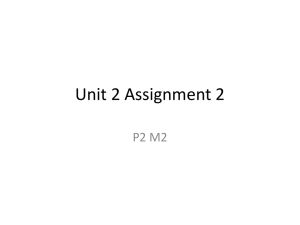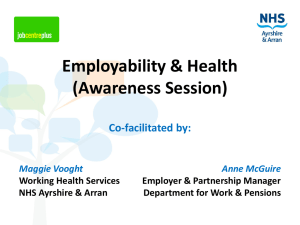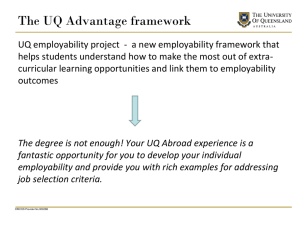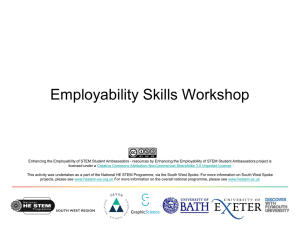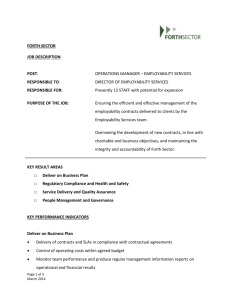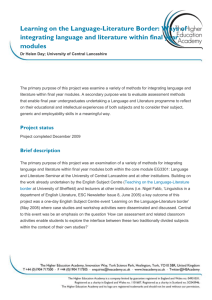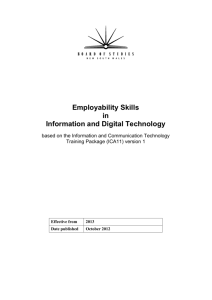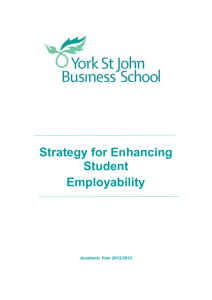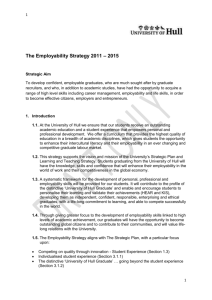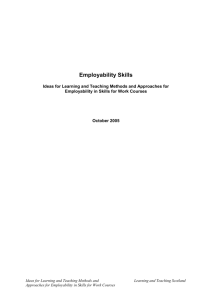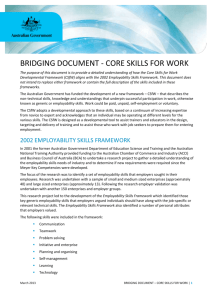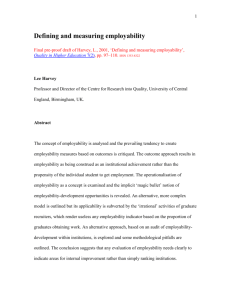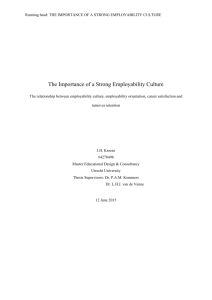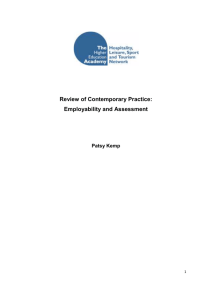About NEST ™ (National Employability Skills Test)
advertisement
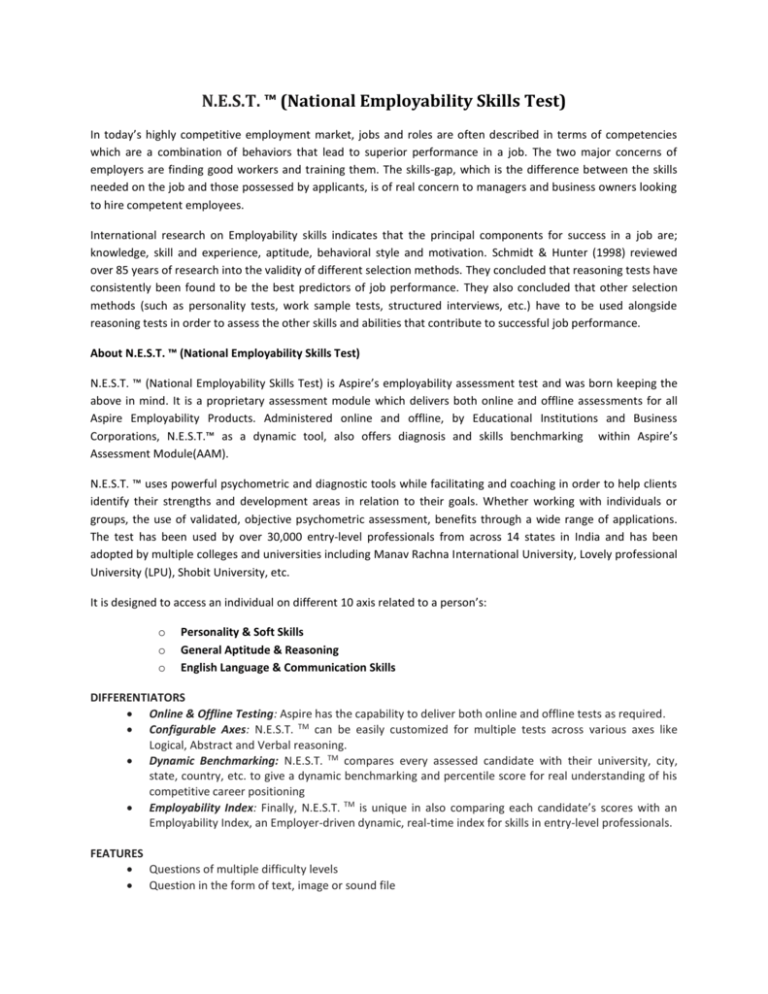
N.E.S.T. ™ (National Employability Skills Test) In today’s highly competitive employment market, jobs and roles are often described in terms of competencies which are a combination of behaviors that lead to superior performance in a job. The two major concerns of employers are finding good workers and training them. The skills-gap, which is the difference between the skills needed on the job and those possessed by applicants, is of real concern to managers and business owners looking to hire competent employees. International research on Employability skills indicates that the principal components for success in a job are; knowledge, skill and experience, aptitude, behavioral style and motivation. Schmidt & Hunter (1998) reviewed over 85 years of research into the validity of different selection methods. They concluded that reasoning tests have consistently been found to be the best predictors of job performance. They also concluded that other selection methods (such as personality tests, work sample tests, structured interviews, etc.) have to be used alongside reasoning tests in order to assess the other skills and abilities that contribute to successful job performance. About N.E.S.T. ™ (National Employability Skills Test) N.E.S.T. ™ (National Employability Skills Test) is Aspire’s employability assessment test and was born keeping the above in mind. It is a proprietary assessment module which delivers both online and offline assessments for all Aspire Employability Products. Administered online and offline, by Educational Institutions and Business Corporations, N.E.S.T.™ as a dynamic tool, also offers diagnosis and skills benchmarking within Aspire’s Assessment Module(AAM). N.E.S.T. ™ uses powerful psychometric and diagnostic tools while facilitating and coaching in order to help clients identify their strengths and development areas in relation to their goals. Whether working with individuals or groups, the use of validated, objective psychometric assessment, benefits through a wide range of applications. The test has been used by over 30,000 entry-level professionals from across 14 states in India and has been adopted by multiple colleges and universities including Manav Rachna International University, Lovely professional University (LPU), Shobit University, etc. It is designed to access an individual on different 10 axis related to a person’s: o o o Personality & Soft Skills General Aptitude & Reasoning English Language & Communication Skills DIFFERENTIATORS Online & Offline Testing: Aspire has the capability to deliver both online and offline tests as required. Configurable Axes: N.E.S.T. TM can be easily customized for multiple tests across various axes like Logical, Abstract and Verbal reasoning. Dynamic Benchmarking: N.E.S.T. TM compares every assessed candidate with their university, city, state, country, etc. to give a dynamic benchmarking and percentile score for real understanding of his competitive career positioning Employability Index: Finally, N.E.S.T. TM is unique in also comparing each candidate’s scores with an Employability Index, an Employer-driven dynamic, real-time index for skills in entry-level professionals. FEATURES Questions of multiple difficulty levels Question in the form of text, image or sound file Question aging and disabling based on usage Up to 5 choices for the answers to every question Large question bank to ensure randomness Automatic individual score analysis and generation of reports Comprehensive statistical score analysis for the entire population BENEFITS of N.E.S.T.™ A. Corporate: Enhanced recruitment and training Profiling and planning with more effective career development systems Transparent assessment system and ability to view candidate performance in real-time Low cost per test through licensed software Ability to add captive questions to the Question Bank as corporate IP B. Candidate: Candidate can identify their strengths and development areas in relation to their goals Personal development with more effective career planning Objective pre-and-post training assessment for SWOT diagnosis Candidates can compare their relative positioning across each axis to the relative employability standards Low cost of self-assessment

